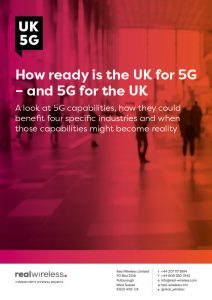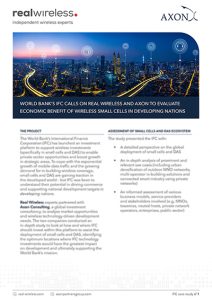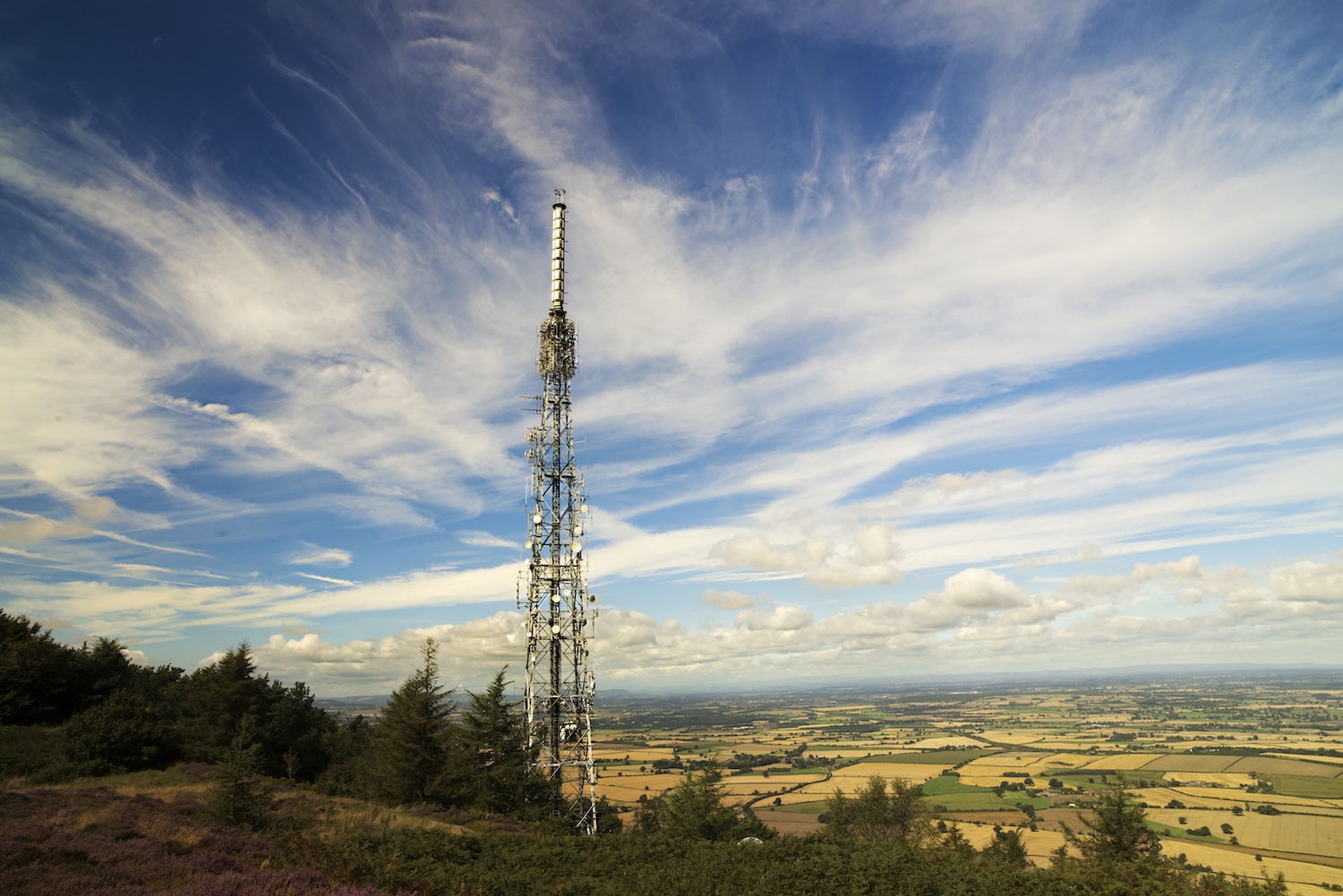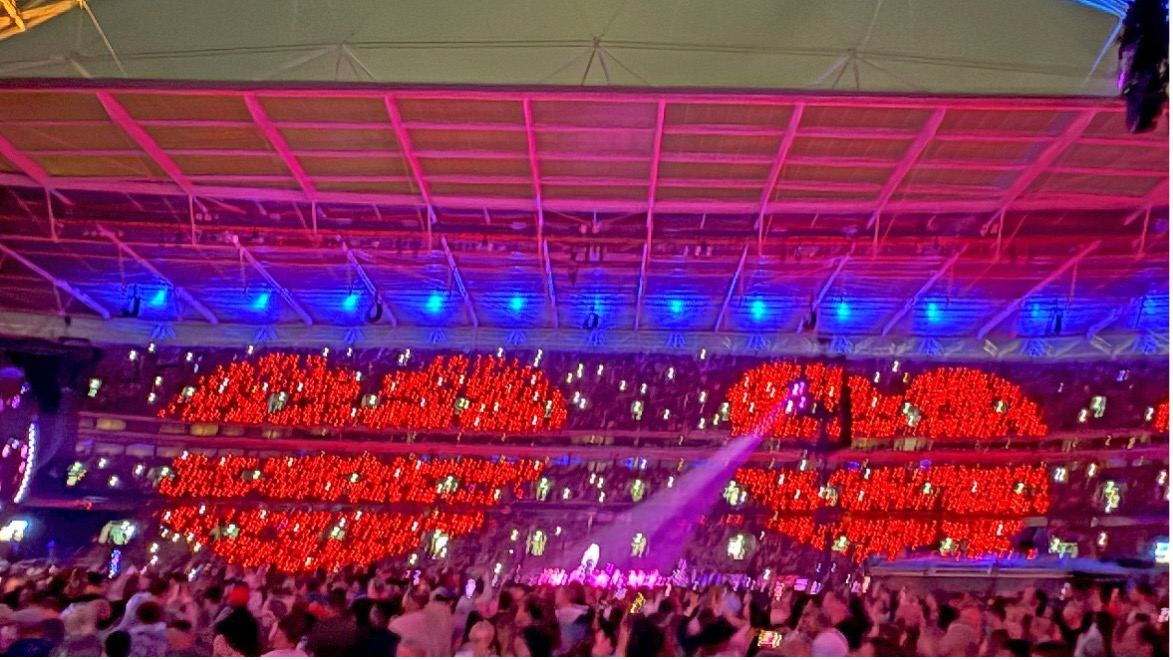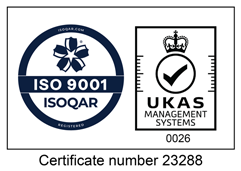The UK’s mobile landscape is about to enter a new phase. Ofcom has announced the outcome of the Principal Stage of the UK’s mmWave spectrum auction that began on 15 October 2025, covering the 26 GHz (25.1–27.5 GHz) and 40 GHz (40.5–43.5 GHz) bands. EE, O2 and VodafoneThree have each won 800 MHz of spectrum in the 26 GHz band and 1 GHz of spectrum in the 40 GHz band. They will pay £13m each for this spectrum. The Assignment Stage will now take place, during which bidders can bid for specific frequencies corresponding to the number of lots they won in the Principal Stage
At the same time, Ookla has expressed optimism, suggesting that the UK could “make a splash” with mmWave deployment. However, whilst the technology excites operators and analysts alike, questions remain about whether the auction-based approach is the best way to unlock the potential of mmWave spectrum – or whether the UK could benefit from more innovative, flexible spectrum management strategies.
Revisiting the Real Wireless perspective
In 2021, Real Wireless conducted a study for the UK Spectrum Policy Forum exploring how new and innovative approaches to mmWave spectrum licensing could work in practice: 26 GHz – the opportunity for a fresh approach to licensing in higher frequencies – Real Wireless. The proposal we explored was simple but strategic: the UK should be divided into two distinct zones:
- High-demand areas (≈1% of the UK’s landmass) with exclusive licensed access to manage network congestion in urban hotspots.
- Low-demand areas (≈99% of the country) with shared, first-come-first-served access, offering affordable access and encouraging experimentation by new entrants, private networks and industry verticals.
We also recommended pooling unused spectrum for opportunistic access, improving efficiency and creating flexibility without compromising the service quality. Our modelling demonstrated that this approach could deliver high-quality connectivity, efficient spectrum use and space for innovation, all whilst avoiding the problems seen in other countries where mmWave auctions have led to limited deployments and in some cases cancelled licences.
Encouraging alignment with Ofcom’s current direction
It’s gratifying to see that Ofcom’s latest strategy for the 26 GHz and 40 GHz bands mirrors many of these principles:
- Exclusive licences in high-density areas: Ofcom identified 68 high-density areas, covering just 0.7% of the UK’s landmass, yet accounting for 41% of total mobile data traffic. This aligns closely with our recommendations for urban hotspots, where dedicated access ensures service quality.
- Shared Access in low-density areas: Outside of these hotspots, Ofcom is applying the existing Shared Access framework, effectively allowing multiple users to share spectrum in lower-demand regions. This also is very much in line with our “low-demand zone” concept, ensuring that the wider UK can access mmWave without unnecessary barriers.
But is an auction still the right mechanism?
Despite these encouraging signs, the auction model itself warrants scrutiny. Whilst clock auctions are fair and transparent, they may be complex and costly, particularly for smaller operators or vertical industries. This could limit innovation and narrow the pool of participants to traditional MNOs.
Moreover, international experience suggests caution. In the US and Italy, mmWave auctions have not translated into widespread or economically viable deployment, largely due to the limited propagation range, high infrastructure costs, and the concentration of demand in urban hotspots. This raises an important question: Is the UK’s auction model fit for purpose to unlock mmWave’s full potential?
There are also notable differences with prior auctions. The 15-year licence term offers certainty, but may be less flexible than shared models, whilst existing restrictions in certain low-density areas (e.g. receive-only stations in the 25.5–26.5 GHz range) make other portions of the band, like 26.5–27.5 GHz, more attractive for operators seeking nationwide equipment standardisation. This upper portion of the band is comparatively unconstrained, allowing for contiguous spectrum blocks, simpler network planning, and alignment with international 5G equipment bands, all of which reduce deployment costs and complexity.
The case for shared and flexible access
Real Wireless continues to advocate for shared spectrum models, which remain underexplored in current policy. The benefits are clear:
- Optimised spectrum use: Pooling unused spectrum and allowing opportunistic access improves overall efficiency.
- Support for innovation: Private networks and industry verticals can deploy solutions without waiting for large-scale auctions.
- Flexibility across environments: Differentiated access models reflect the diverse geographic and market realities of the UK, unlike a “one-size-fits-all” approach.
In short, shared and flexible access complements exclusive licences in hotspots, offering a more holistic way to unlock mmWave’s potential.
Conclusion: Fit for purpose, but more innovation is needed
Ofcom’s current approach demonstrates progress. By tailoring access based on demand, it acknowledges that mmWave is not a uniform solution across the country. However, reliance on traditional auction mechanisms may limit participation and stifle innovation, particularly in lower-demand areas where shared access could thrive.
As mmWave enters its next phase in the UK, flexible, innovative licensing approaches — including spectrum sharing and opportunistic access — remain key to realising its promise. Whilst the auction sets the stage for deployment, the broader challenge is ensuring mmWave serves the entire UK, not just a few urban hotspots.
At Real Wireless, we continue to champion approaches that balance certainty, efficiency and innovation, ensuring that the UK can truly lead in 5G without repeating the limited successes in mmWave deployments seen elsewhere.
